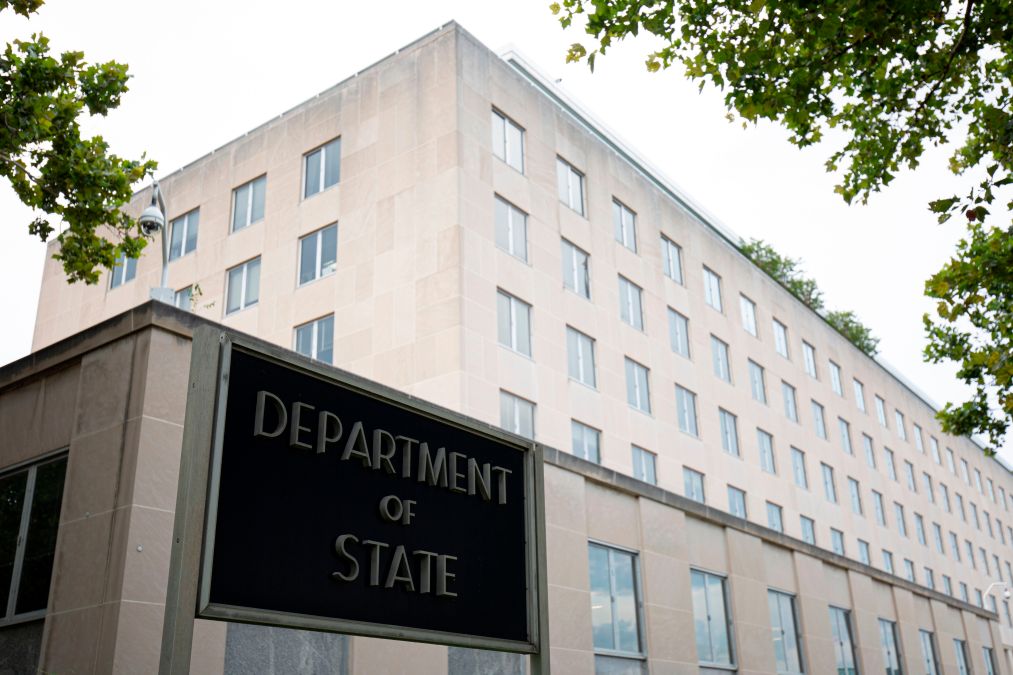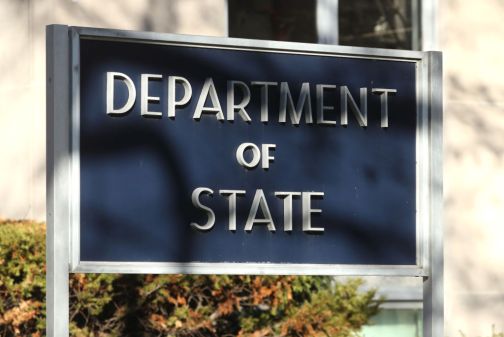Opinion: How do you make the State Department data-driven? One campaign at a time

Digital transformation is hard no matter where you do it. In fact, Boston Consulting Group estimates that 70% of digital transformation efforts fail or underwhelm — and that’s in the private sector. Now, imagine trying it inside America’s oldest cabinet agency: the U.S. Department of State. Driven by well-honed intuition, humanistic expertise, and gut instinct, the department sets the standard for “the art of diplomacy.” But as “the second oldest profession,” diplomacy can be rife with nuance, traditions, and rituals — not exactly the stuff of spreadsheets and decimal points.
Secretary Antony Blinken’s modernization agenda and the department’s first-ever Enterprise Data Strategy — signed one year ago this week — are changing the game. The Enterprise Data Strategy (EDS) helped the Department surge data policy, data engineering, and data science resources to high-priority, high-visibility mission and management topics in successive, six-month “data campaigns.” Already, data is informing decisions across management issues like anomalous health incidents and cybersecurity, crisis operations like the Afghanistan retrograde, and foreign policy issues including strategic competition with China and U.S. engagement in multilateral organizations. We see our unique “campaign” approach to delivering on the data strategy as a key reason the State Department is currently seeing so much success.
What makes our campaigns different? Oftentimes in government, a strategy is blessed by senior leaders and organizations commit to impossible goals, even over the long term. And organizational and cultural change in large government organizations is famously hard, even with senior leader buy-in.
Instead, we recognize that like any technical project, priorities change quickly. No proposed implementation plan would survive first contact with mission realities. The EDS intentionally promotes an abstract three to five-year “implementation roadmap” centered on delivering decision advantage through analytics, effectively governing data as a strategic asset, building a culture of data literacy, and developing the needed tech backbone.
The data campaigns are vehicles for applying the EDS to targeted priorities with which the department workforce is already intimately engaged. For example, the first two data campaigns were strategic competition with the People’s Republic of China (PRC), and workforce diversity, equity, inclusion, and accessibility (DEIA). Our bet was that if we could prove data and analytics — and a cultural mindset supportive of them — could deliver real, tangible results on strategic competition and workforce DEIA, people throughout the organization would start to trust that data and analytics could help with their mission too. Change by showing, not telling.
Animating philosophy and campaign structure
The animating philosophy for our data campaigns is “12-8-4”: We plan to accomplish 12 things, we’ll get eight of them done, and that will still be four more than anyone thought possible. We back up this philosophy with an aggressive surge of resources to apply analytics to a topic with a go-fast, sprint-to-the-finish mentality. We believe the core benefit of a campaign-based approach to digital transformation is that high-priority mission and management topics motivate people to partner, get to yes, and deliver results more quickly and robustly than abstract strategic goals. No one gets excited about showing up to a “data quality working group,” but a working group on how to unlock HR data to dismantle structural barriers to racial equity in our diplomatic workforce? That’s an effort worth getting behind.
Functionally, a campaign is all about integrated, cross-functional delivery across our own teams. Each campaign is assigned not just dedicated analytics teams, but also communications staff, data policy and data-sharing agreement specialists, and full-stack engineers. Cross-functional delivery ensures we are bringing the right tools to the problem. If what we need is a new data policy, not machine learning, we shouldn’t be technological determinists just because it sounds more innovative. Often what our customers need first and foremost is systematized, sustainable data management and information synthesis, not predictive algorithms. Our cross-functional teams ensure we have and deliver the right tools to the problem.
Crucially, the campaign construct attracts executive attention. Working on the highest-priority issues means analytics teams get the attention and support needed from senior leaders to actually implement the strategy in the face of inevitable technical and bureaucratic blockers. In exchange, campaign teams are accountable for actually delivering value — not producing “shelfware” strategy-implementation status reports. Fortunately, this visibility has helped deliver results. And we’ve been able to build trust among data skeptics and help leaders and staff alike understand the value of data to their own goals – why analytics is not just a “nice to have,” but a “must-have” on foreign assistance, competition with China, diplomatic engagement, or crisis operations.
Data campaigns and beyond
To help bring better data to the massive challenge of diversity, equity, inclusion, and accessibility (DEIA), we took a collaborative approach with Ambassador Gina Abercrombie-Winstanley and her new Office of Diversity and Inclusion, the Bureau of Global Talent Management, the Office of Civil Rights, and the Office of the Legal Advisor. After a six-month DEIA data campaign, we produced a baseline assessment available to the entire department to bring hard numbers to the challenge of DEIA. One career ambassador told us this effort was “the most transparent and actionable information on DEIA” they had seen in their 30 years of service. To build this report, our campaign team worked with partners throughout the agency to develop the first DEIA data policy in the history of the U.S. government. The policy has made HR information more transparent and accessible while protecting individual privacy and meeting all legal requirements.
Our China work has also been essential to the Department’s growing focus on strategic competition with the PRC. First, we developed an analytics platform tracking PRC activities around the world, which is regularly used to inform our foreign policy, strategic planning, global presence, and resource allocations. We also took a hybrid subject matter expertise survey and algorithmic approach to recommend foreign assistance projects under the Countering PRC Influence Fund, aligning foreign assistance to strategic priorities. We have also built a prototype platform to derive insights from millions of diplomatic cables at scale using machine learning, which helps the State Department make fuller use of our most important novel data asset: on-the-ground reporting from our worldwide network of diplomatic posts.
The value of data to diplomacy that these campaigns and other efforts have shown has begun to pay dividends elsewhere. We’ve seen record enrollment in the Foreign Service Institute’s training courses on data literacy and analytics and the inclusion of data literacy in promotion precepts for the Foreign Service. We are also successfully competing for the top data science talent in the industry. Over the past year, dozens of new data scientists joined the State Department across an array of mission areas and bureaus – not just the Office of Management Strategy and Solutions’ Center for Analytics. And State’s current initiative to hire at least 50 data scientists for positions across the department received over 400 applications in only a few days. As Deputy Secretary for Management and Resources Brian McKeon said to Congress, it may surprise you to learn that top data scientists want to serve their country at the State Department, and are leaving top jobs in industry and academia to do so. With the unique opportunity afforded by the EDS and our data campaigns, this does not surprise us.
When British Prime Minister Lord Palmerston received his first telegraph message in the 1860s, he exclaimed, “My God, this is the end of diplomacy!” Yet here we are, and needless to say, technology will never be the “end” of diplomacy. Rather, by infusing the art of diplomacy with modern technology and the science of data, we are strengthening the digital backbone of America’s diplomatic corps and ensuring the country’s oldest cabinet agency delivers results for the American people far into the future — one campaign at a time.
Matthew Graviss is the chief data officer at the Department of State. Garrett Berntsen is his deputy.






